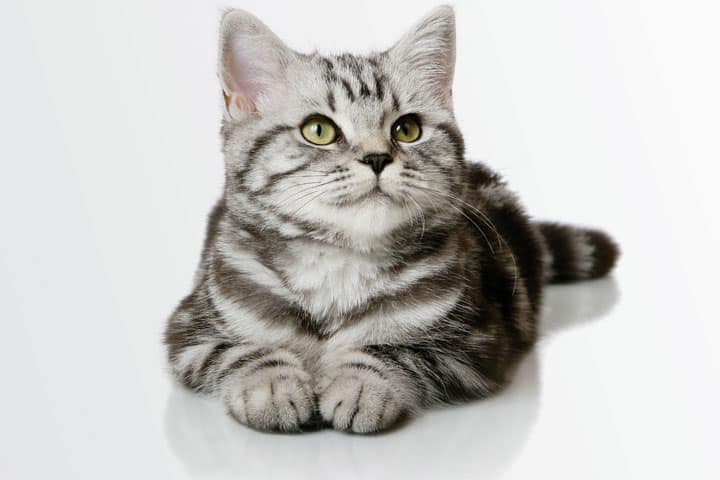
Idiopathic chronic rhinitis can be frustrating to manage, due to its largely unknown aetiology and frequent recurrence of clinical signs. Here are some top tips and thoughts on how to approach these cases.
What are the clinical signs of idiopathic chronic rhinitis in cats?
Chronic or recurrent signs including stertor, nasal discharge (serous, mucoid or rarely mild epistaxis) and sneezing are common. Similar clinical signs can be seen in cats with nasopharyngeal polyps, nasal foreign bodies, dental disease (e.g. tooth root abscess), infectious rhinosinusitis (e.g Aspergillosis, Cryptococcus), nasal neoplasia & conformational abnormalities (e.g. cleft palate, brachycephalics).
What is the association between acute viral rhinitis and idiopathic chronic rhinitis?
Viral infection (FHV-1 or FCV) is often implicated as the initiating cause of acute rhinitis, however the pathogenesis of idiopathic chronic rhinitis is unknown. Inflammation can be perpetuated in the absence of recrudescence of viral infection. Studies have shown that there is no significant difference in the detection of FHV-1 in cats with chronic rhinitis when compared to healthy cats¹. Some cats with chronic rhinitis have no prior history of acute viral rhinitis. Unfortunately it is not possible to determine the course or cause of idiopathic chronic rhinitis in any given individual.
Is viral testing indicated in cats with chronic rhinitis?
Interpretation of viral testing is difficult. A negative result can mean the cat is not infected, is only intermittently shedding the virus, or is shedding at low levels not detectable by the PCR. A positive result can mean that the cat is affected, or is simply a ‘healthy’ carrier or has recently been vaccinated.
What investigations should be performed?
A routine minimum database (haematology, biochemistry, retroviral testing) should be considered. Sinonasal radiography can be difficult to interpret due to overlying structures and complex anatomy. CT scanning is considered superior to radiography for assessing the nasal cavity and sinuses and would be recommended. Rhinoscopy of the nasal cavities allows assessment of the mucosa, the amount of discharge present, the presence of turbinate destruction and aids in identifying masses or foreign bodies. Nasal biopsies can be submitted for histology +/- culture.
What should be submitted for culture?
Many commensal bacteria are found in the feline nose, therefore culture of superficial nasal discharge is unlikely to be helpful. The recent publication “Antimicrobial use Guidelines for Treatment of Respiratory Tract Disease in Dogs and Cats: Antimicrobial Guidelines Working Group of the International Society for Companion Animal Infectious Disease (ISCAID)”² recommends that bacterial culture should be performed on material obtained by nasal lavage or by nasal biopsy. Prior to performing nasal lavage, the throat must be packed to reduce the risk of aspiration. A sterile catheter can be placed antegrade into the rostral nasal cavity (no further than the medial canthus of the eye), and 2-3ml of sterile saline infused with re-aspiration of an aliquot to send for culture.
What bacteria should be treated?
Identification of bacteria does NOT imply the organism is responsible for clinical signs. A mixed growth of commensals should not be treated. A heavy growth of a potentially pathogenic organism may be appropriate to treat. These include Pseudomonas aeruginosa, E coli, Staph pseudointermedius, Pasteurella multocida, Corynebacterium, Actinomyces, Bordetella bronchiseptica and Mycoplasma. However it is important to note that Bordetella and Mycoplasma can be commensals, as can multi-drug resistant bacteria. We do know that cats with idiopathic chronic rhinitis often improve with antibiotics. This supports the role of bacteria, however the frequent recurrence implies that bacteria are secondary to an untreatable underlying cause.
Which antibiotic to use and for how long?
The ISCAID guidelines advise using doxycycline or amoxicillin for chronic rhinitis (ideally based on culture results). If there is an initial positive response, treatment should continue for 4-8 weeks. If there is no improvement within 7-10 days of antibiotic treatment, further investigations are needed. Antibiotics should be limited to the most severe cases. There is no evidence to say that fluoroquinolones or cefovecin are superior to doxycycline or amoxicillin for chronic rhinitis, their used should be limited due to antibiotic resistance.
What other treatments can be trialled?
Management options are largely anecdotal, and owner consent must be obtained for those that are off licence. Options include:
- Intermittent instillation of 1-2 drops of sterile water into nostrils by owners at home, with the head elevated whilst swallowing is observed. This can help maintain nasal hydration and encourage drainage of the nose. Alternatives are nebulisation or exposing the cat to a bathroom with warm shower steam.
- Anti-inflammatory steroids (intermittent rather than continuous usage)
- Non-steroidal anti-inflammatories
- Nasal decongestants can reduce mucosal oedema but cannot be used for >3 days due to rebound vasodilation & worsened symptoms
- Antihistamines
- Environmental management (reduce dust from cat litter, no smoking at home)
- Nasal flushing under anaesthesia to help clear nasal

Case Advice or Arranging a Referral
If you are a veterinary professional and would like to discuss a case with one of our team, or require pre-referral advice about a patient, please call 01883 741449. Alternatively, to refer a case, please use the online referral form
About The Discipline
Oncology

Need case advice or have any questions?
If you have any questions or would like advice on a case please call our dedicated vet line on 01883 741449 and ask to speak to one of our Oncology team.
Advice is freely available, even if the case cannot be referred.
Oncology Team
Our Oncology Team offer a caring, multi-disciplinary approach to all medical and surgical conditions.